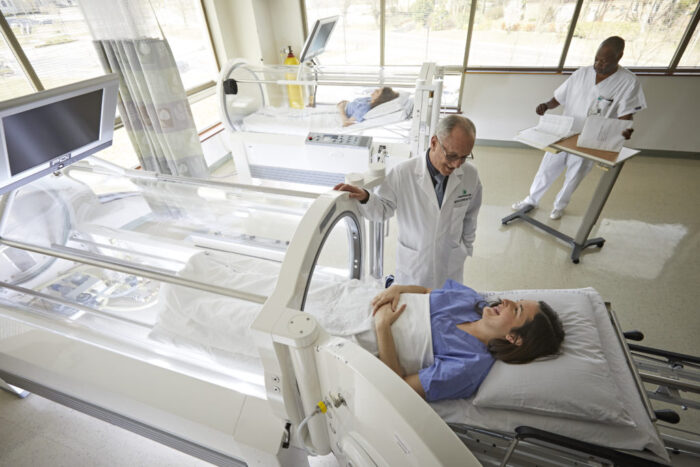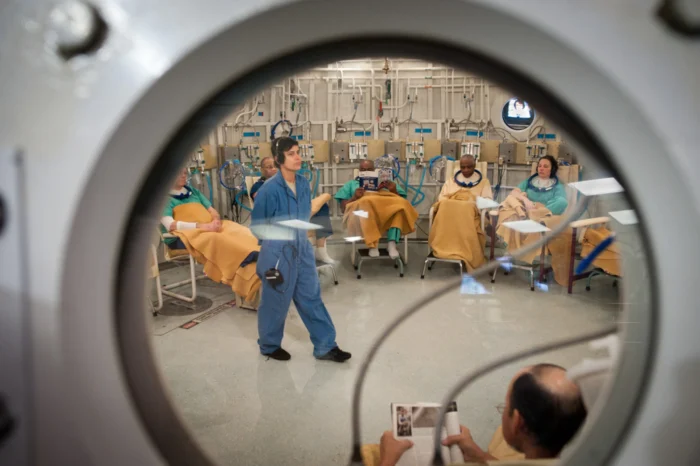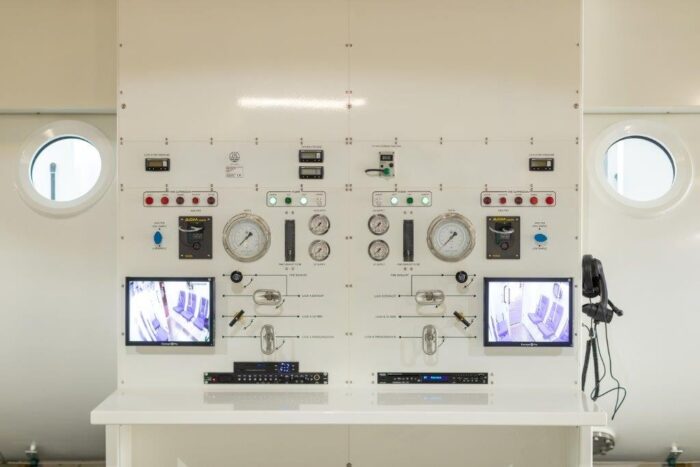Oxygen chambers that supply pure oxygen at high pressure are known as hyperbaric oxygen chambers. These chambers can be of different types. They can be small in size and meant for a single person, or they can be large to accommodate multiple people at the same time.
Hyperbaric oxygen chambers have been shown to be effective in treating many disorders like gas embolisms. It is also effective in boosting immunity and speeding up the healing of wounds. So if you want to get a hyperbaric oxygen chamber for yourself, you can go to oxyhelp.com.
Despite the great medical benefits offered by hyperbaric chambers, people often doubt the effectiveness and safety of these chambers. Most of the apprehension stems from the fact that people do not fully understand the technology behind the therapy. So this article will talk about the science behind a hyperbaric chamber and the safety precautions inbuilt in the chamber.
Laws Of Physics That Act In A Hyperbaric Unit

Source: mdpi.com
The pure oxygen that is supplied in a hyperbaric chamber dissolves in the fluid in the body and is not complexed with proteins like Hemoglobin. At high pressure, such as three times the atmospheric pressure, about 6ml of oxygen is dissolved per deciliter of body fluid.
The high rate of gas dissolution at higher pressure follows Henry’s law. Henry’s law says that the amount of gas that is dissolved in a liquid depends on the pressure that the gas exerts on a fluid surface. Since the pressure of oxygen is high in a hyperbaric chamber, the amount of oxygen dissolved in the body fluid of the patient increases.
Apart from Henry’s law, Boyle’s law is at work in a high pressure compartment. Boyle’s law implies that the pressure of a gas and its volume are inversely related. Hence if the pressure increases, the volume decreases and vice versa. This principle helps to treat embolisms.
A pulmonary embolism is a gas bubble in a blood vessel. High pressure chambers reduce the volume, that is, the bubble size of oxygen gas in the blood vessel, and thus they can prevent strokes and other harmful effects of pulmonary embolisms.
What Goes On Inside A High Pressure Oxygen Unit

Source: pinterest.com
The Outer Body Is Made Of Acrylic
The high pressure compartments are usually made up of acrylic. Acrylic is a rigid and transparent material. It can provide an airtight seal which maintains the high pressure in the compartment. The outer cover has epoxy coatings at both the ends to ensure an airtight system with no leaks.
Moreover, it is transparent so the patient and the operator can clearly see each other. A transparent setting is advantageous because it comforts the patient, and the operator can monitor any symptom or side effect that the patient shows.
Acrylic has a distinct advantage over other transparent and rigid materials like glass. Acrylic shows the sigma of deterioration on its surface, unlike glass. Thus, an operator can easily monitor the safety of the container when it is made up of acrylic.
Maintaining Safe Oxygen Levels
Oxygen is supplied inside the chamber using a hand or a foot pump, and the flow of oxygen is maintained at more than 15 liters per minute. There are flow regulators to control the flow of the gas.
Patients who are breathing pure oxygen also get regular breaks. That is, they are given 100% pure oxygen and ambient air (21% oxygen, 78% Nitrogen) alternatively. This ensures that harmful effects of reactive oxygen radicals are reduced to a minimum.
The compartment also has a fire detection and suppression system. A high concentration of oxygen is a potential fire hazard. Any small flame can cause great damage. Hence the compartments come with fire sensors, and they have an emergency water hose to douse any fire.
The container also has a mechanism to remove the carbon dioxide that is naturally breathed out by the patient. The carbon dioxide is removed using scrubbers. The scrubbers are made up of compounds like potassium hydroxide, quick lime etc. These compounds absorb carbon dioxide and form carbonate salt, thus removing gaseous carbon oxide from a compartment.
Control Panel And Regulators

Source: sharp.com
A control panel is usually placed outside the chamber. The control panel regulates the flow of gas, and it maintains the appropriate amount of pressure inside the compartment. In fact, most hyperbaric oxygen units have an overpressure relief system. Excessive air pressure is harmful to the patient’s body. Very high air pressure can deflate the lungs of the patient. In order to reduce such harmful effects of high gas pressure, the overpressure relief channel opens to release excess air pressure.
CCTV And Intercoms
Some hyperbaric rooms that do not have a transparent cover have CCTV cameras and intercoms. The operator can monitor the patient through the CCTV camera, and the patient can contact the operator via an intercom if he feels uneasy.
Foldable Chambers
Most of the time, the hyperbaric units are foldable to make them easily portable. The foldable units are made up of flexible fabrics and plastics instead of acrylic.
Conclusion
High pressure oxygen units come in wide varieties. They differ in their sizes, the material used for the compartment and even terms of the air mix that is supplied inside the unit. Some face bags use pure oxygen only for the face area while the rest of the body is exposed to ambient air (nitrogen rich).
Different versions of hyperbaric units differ in effectiveness, yet all of them are safe and effective in treating several disease conditions. Most doctors recommend these chambers as a part of a multi-pronged treatment regime where drugs and surgeries are not very effective in treating the disease.
There are concerns about the ill effects of exposing the body to such high pressure, especially for those who have weak lungs or for those who have an injured spine. However, most patients can rest assured that the doctors and operators will admit them to a chamber only if they are physically fit for undergoing the treatment.




